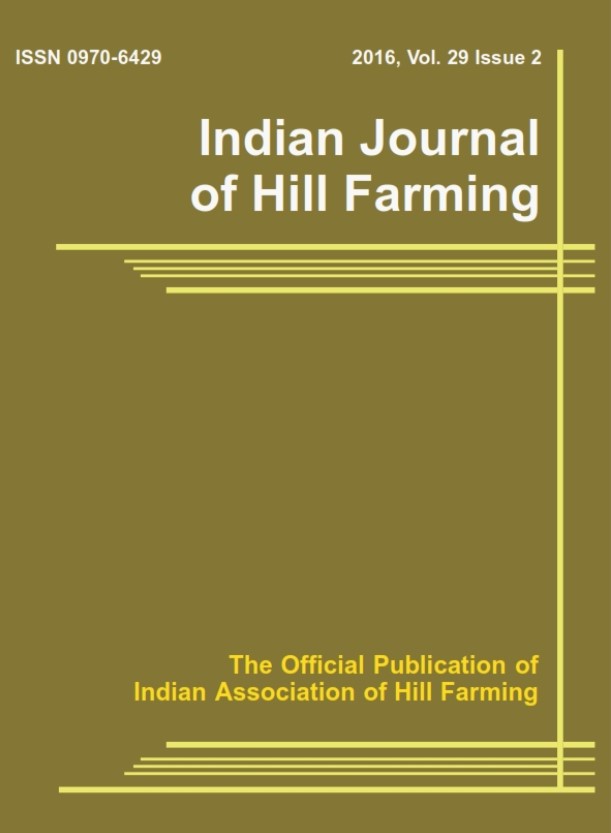Effect of different nutrient management practices on yield and nutrient uptake by maize in an acid Alfisol of North-West Himalayas
Keywords:
Biological yield; FYM; Grain yield; Lime; Maize; Nutrient uptake; Stover yield.Abstract
The present investigation was carried out to standardise the best nutrient management practice for maize cv.BajauraMakka in an acid hill soil. The experiment consisted of three replications in a randomized block design having eleven treatments comprising recommended NPK levels, and, their integration with FYM, and lime, organic farming package, three Natural Farming System (NFS) practices involving formulations based on excreta of indigenous (Desi) cows, crossbred cows and buffalo, and their supplementation with 25 per cent of recommended NPK. The results showed that the highest grain (42.25 q ha- 1),stover (71.82 q ha-1) and total biological yield was recorded under RDF + FYM @ 10 t ha-1. Among organic treatments, higher grain (29.13 q ha-1) and total biological yield (65.01 q ha-1) was recorded under organic farming practices followed by NFS-Desi cow (20.64 and 50.98 q ha-1, respectively). The highest total N (147.53 kg ha-1), P (34.19 kg ha-1) and K (97.36 kg ha-1) uptake by maize crop was recorded under RDF + FYM @ 10 t ha-1 which produced nonsignificant differences with RDF + lime. Among integrated organic treatments, organic farming practices + 25 per cent NPK recorded higher total NPK uptake followed by NFS-Desi cow+ 25 per cent NPK. The lowest grain (17.75 q ha-1), stover (25.56.q ha-1), total biological yield (43.30 q ha-1) and total nutrient uptake (56.91 N, 13.66 P and 33.60 K kg ha-1) by maize was recorded under NFS-buffalo treatment. Our results could provide a better understanding of the significance of integration of inorganic fertilizers with organic manure in maintaining soil fertility and thus, enhancing nutrient uptake, crop quality and production.




